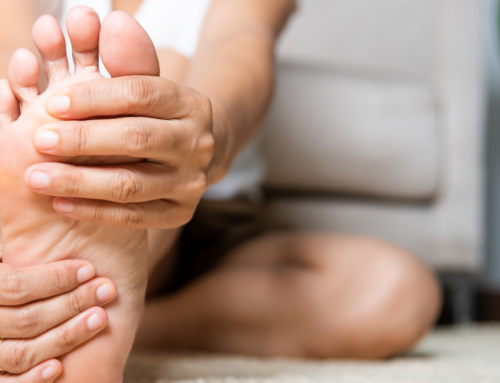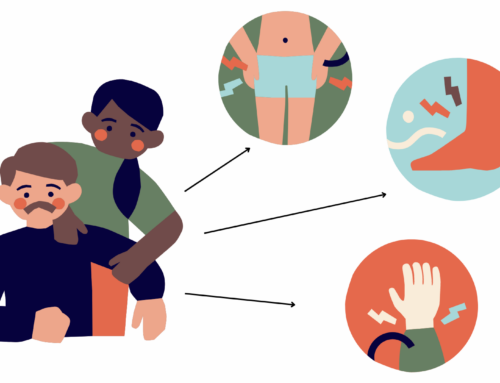Different types of planks for core strengthening
There are different physical exercises with variables that allow you to modify the position to strengthen different parts of the body. An example of this are the planks, which when done correctly help to avoid putting extra pressure on the back and hips, thus reducing the chances of pain and injury. Practicing abdominal planks can help you perform other physical activities without difficulty and will improve the achievement of results.
Benefits
Types of Planks
Plank with elbows supported

Lie on your stomach, straighten your legs, bend your arms under the 90-degree angle (for your comfort you can join hands), and remember that the body from head to toe should form a straight line. Tones the pectoralis major, deltoid and lumbar frame.
Plank with raised arm or leg
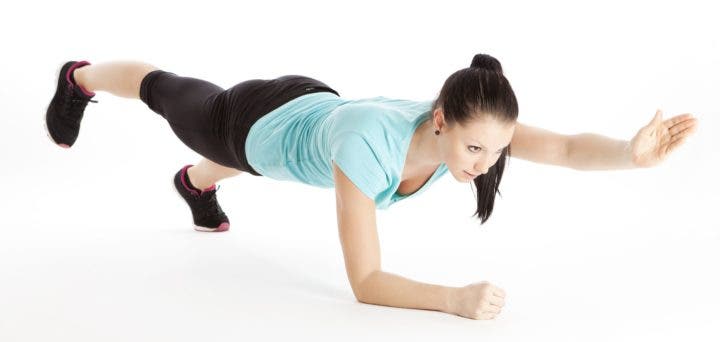
In the classic plank position, stretch one arm and lift one leg. Be careful to keep your shoulders and hips in a straight line. The complexity of this version lies not only in the increased pressure to the body but also in the need to maintain balance and continue in a straight line.
Inverse Plank
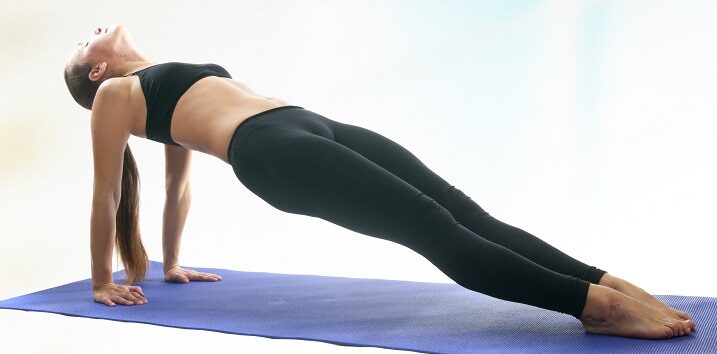
The reverse plank employs, in addition to all the muscles already mentioned, the glutes and calves. The hands are under the shoulders and the palms of the hands face the heels. They stretch the tips of the toes, “push” the hips up and keep the back straight.
Knee sliding plank
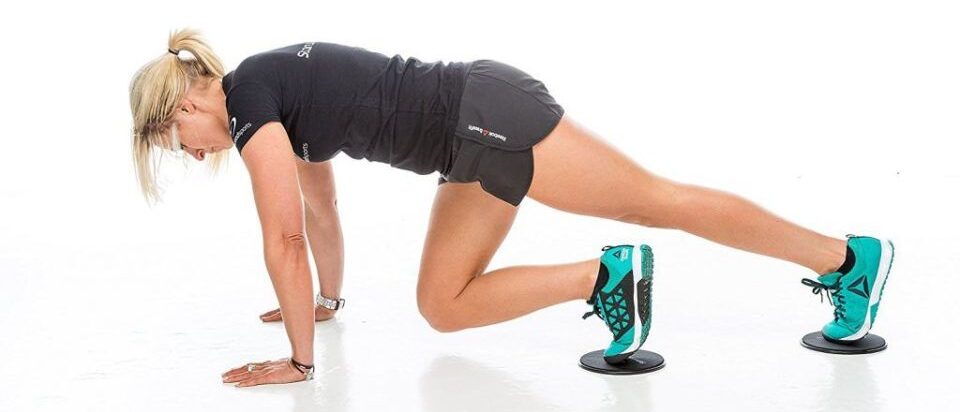
The starting position is the classic plank with arms extended. Then you slide the left knee towards the left elbow, and the right knee towards the right elbow. Try to keep the line straight, the abdomen contracted and the gaze forward.
Side plank with two points of support
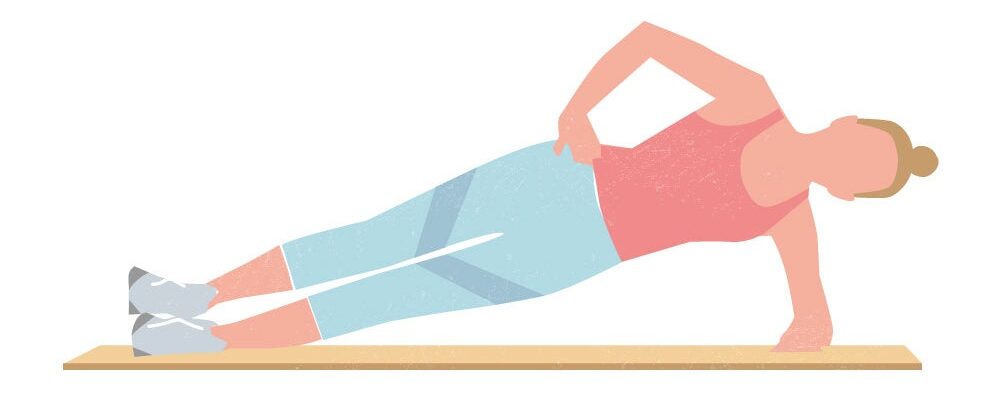
In the side plank position, lift one leg and one arm, trying to keep the muscles contracted. Be careful not to lower your hips. This works the external and internal abdominal muscles, the outer hip muscle and the gluteus medius muscle.
Weight plank
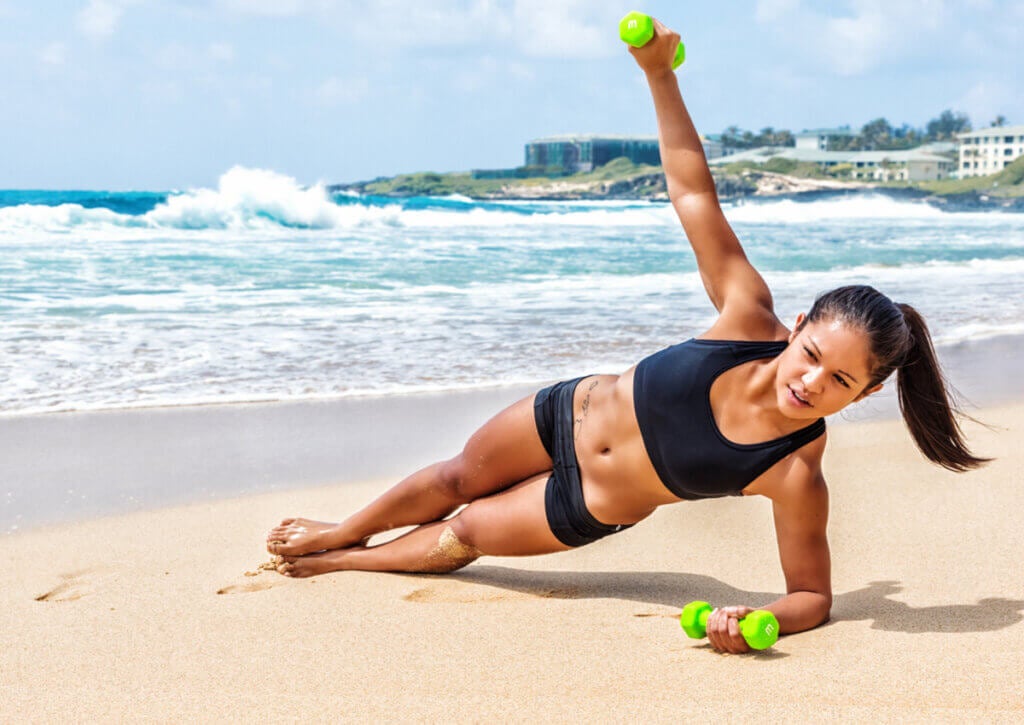
In the classic plank position, strain the muscles of the abdomen and from one movement move to the left side, lifting the right arm with a dumbbell up. The arms should be extended. They return to the starting position and repeat the same on the other side.
There are different physical exercises with variables that allow you to modify the position to strengthen different parts of the body. An example of this are the planks, which when done correctly help to avoid putting extra pressure on the back and hips, thus reducing the chances of pain and injury. Practicing abdominal planks can help you perform other physical activities without difficulty and will improve the achievement of results.
Benefits
Types of Planks
Plank with elbows supported

Lie on your stomach, straighten your legs, bend your arms under the 90-degree angle (for your comfort you can join hands), and remember that the body from head to toe should form a straight line. Tones the pectoralis major, deltoid and lumbar frame.
Plank with raised arm or leg

In the classic plank position, stretch one arm and lift one leg. Be careful to keep your shoulders and hips in a straight line. The complexity of this version lies not only in the increased pressure to the body but also in the need to maintain balance and continue in a straight line.
Inverse Plank

The reverse plank employs, in addition to all the muscles already mentioned, the glutes and calves. The hands are under the shoulders and the palms of the hands face the heels. They stretch the tips of the toes, “push” the hips up and keep the back straight.
Knee sliding plank

The starting position is the classic plank with arms extended. Then you slide the left knee towards the left elbow, and the right knee towards the right elbow. Try to keep the line straight, the abdomen contracted and the gaze forward.
Side plank with two points of support

In the side plank position, lift one leg and one arm, trying to keep the muscles contracted. Be careful not to lower your hips. This works the external and internal abdominal muscles, the outer hip muscle and the gluteus medius muscle.
Weight plank

In the classic plank position, strain the muscles of the abdomen and from one movement move to the left side, lifting the right arm with a dumbbell up. The arms should be extended. They return to the starting position and repeat the same on the other side.



